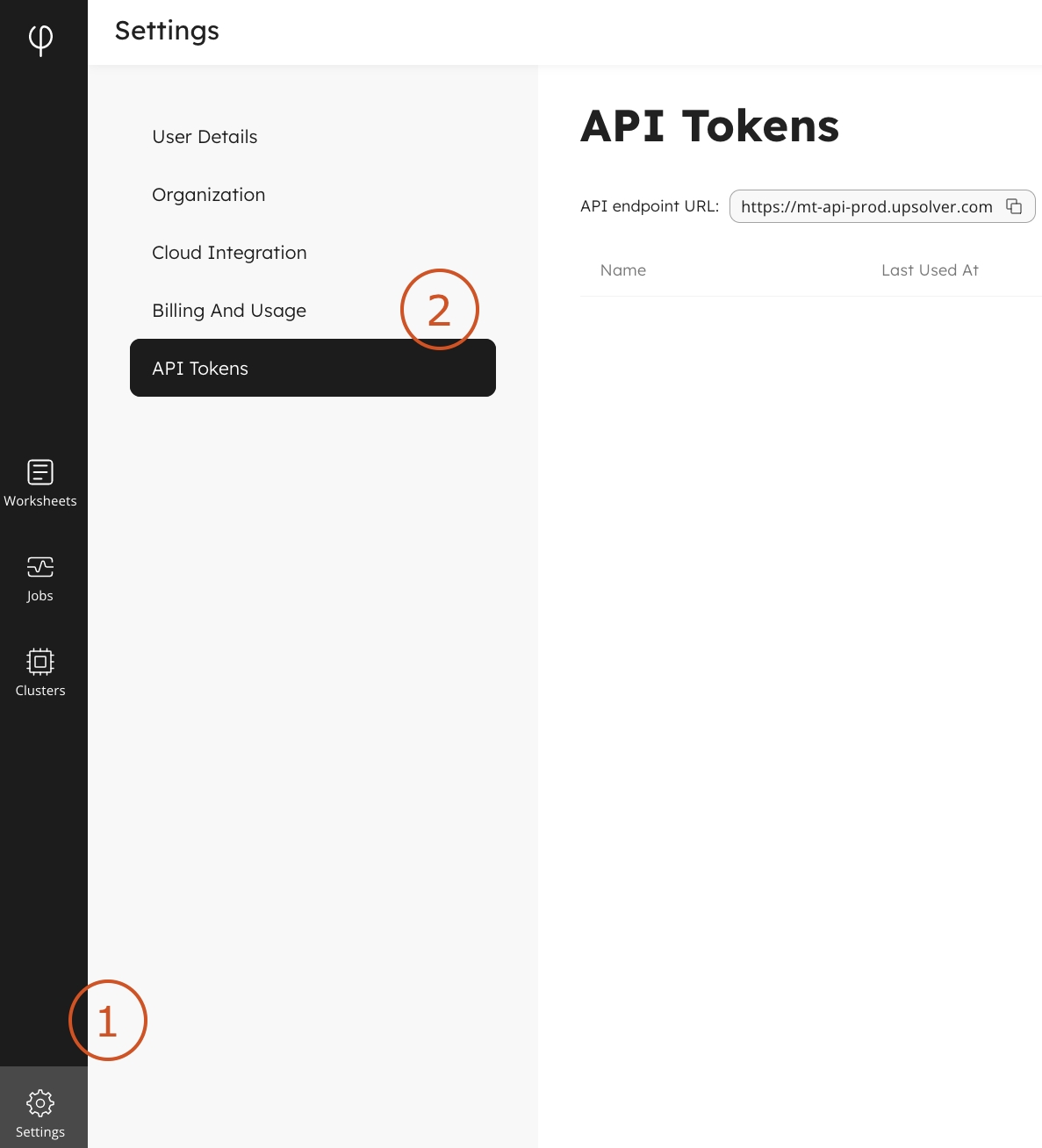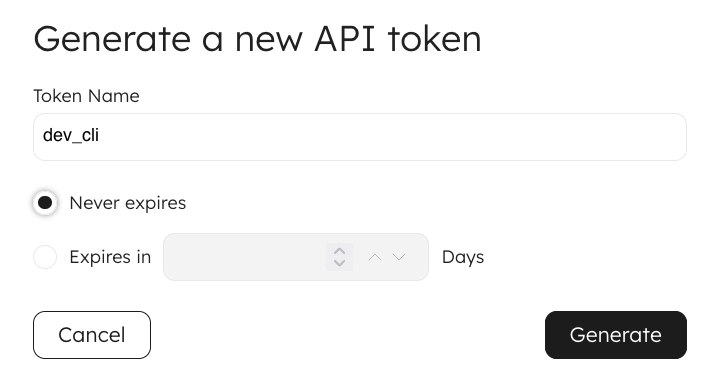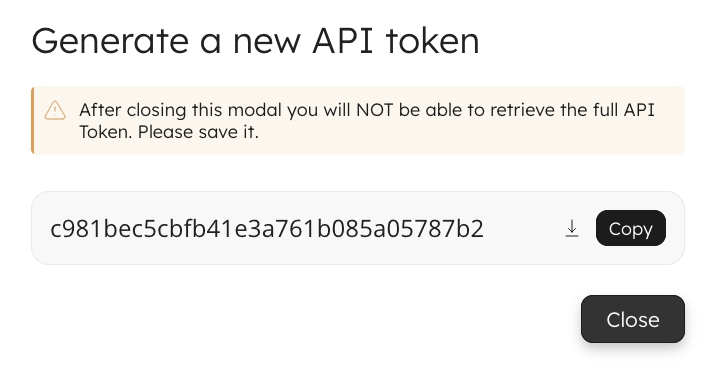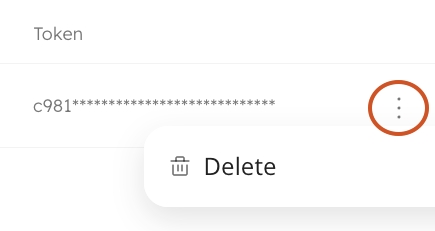Enable API Integration
Enable API integration and manage API tokens.
Upsolver is a data developer platform that makes it easy for developers to integrate their tools and processes so they can work more efficiently. Upsolver exposes a global API endpoint that allows applications like Upsolver CLI to connect and execute SQL code.
Controlling access to the API is performed by creating API tokens in the Upsolver console. Start by clicking the Settings button in the bottom left corner of the console, followed by selecting the API Tokens menu item, as shown below:

Next, click the Generate button at the top right corner. In the dialog box enter a name for your token and select if and when the token should expire.

When you have done this, click Generate and copy your token to a safe place. If you lose this token you will not be able to retrieve it and instead will need to delete it and create a new token.

Your token is ready to be used. Read the guide on how to Install the Upsolver CLI to learn how to get started with the Upsolver CLI.
You can easily delete a token by clicking the three dots to the right of your token and selecting Delete.

Last updated
